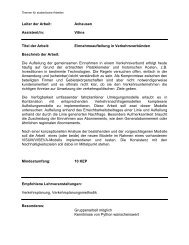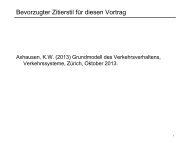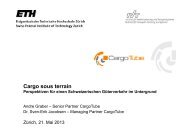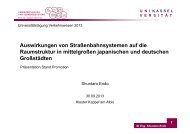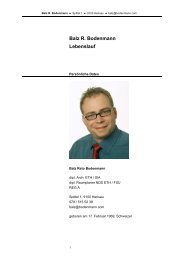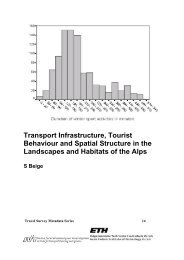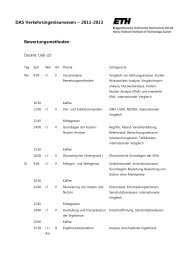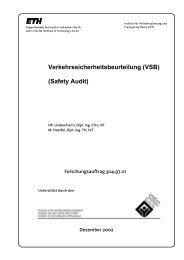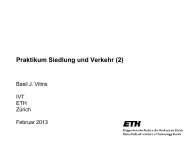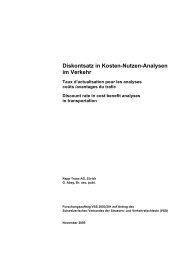A Tour-Based Model of Travel Mode Choice - Civil Engineering ...
A Tour-Based Model of Travel Mode Choice - Civil Engineering ...
A Tour-Based Model of Travel Mode Choice - Civil Engineering ...
Create successful ePaper yourself
Turn your PDF publications into a flip-book with our unique Google optimized e-Paper software.
10 th International Conference on <strong>Travel</strong> Behaviour Research<br />
August 10-15, 2003<br />
A <strong>Tour</strong>-<strong>Based</strong> <strong><strong>Mode</strong>l</strong> <strong>of</strong> <strong>Travel</strong> <strong>Mode</strong> <strong>Choice</strong><br />
Eric J. Miller, Matthew J. Roorda and Juan Antonio Carrasco<br />
Department <strong>of</strong> <strong>Civil</strong> <strong>Engineering</strong><br />
University <strong>of</strong> Toronto<br />
Toronto, Canada<br />
Phone: 01-416-978-4076<br />
Fax: 01-416-978-5054<br />
eMail: miller@civ.utoronto.ca, roordam@ecf.utoronto.ca, carrasc@ecf.utoronto.ca<br />
Abstract<br />
This paper presents a new tour-based mode choice model. The model is agent-based: both<br />
households and individuals are modelled within an object-oriented, microsimulation framework.<br />
The model is household-based in that inter-personal household constraints on vehicle<br />
usage are modelled, and the auto passenger mode is modelled as a joint decision between the<br />
driver and the passenger(s) to ride-share. Decisions are modelled using a random utility<br />
framework. Utility signals are used to communicate preferences among the agents and to make<br />
trade-<strong>of</strong>fs among competing demands. Each person is assumed to choose the “best” combination<br />
<strong>of</strong> modes available to execute each tour, subject to auto availability constraints that are determined<br />
at the household level. The household’s allocations <strong>of</strong> resources (i.e., cars to drivers<br />
and drivers to ride-sharing passengers) are based on maximizing overall household utility, subject<br />
to current household resource levels. The model is activity-based: it is designed to be integrated<br />
within a household-based activity scheduling microsimulator. The model is both chainbased<br />
and trip-based. It is trip-based in that the ultimate output <strong>of</strong> the model is a chosen, feasible<br />
travel mode for each trip in the simulation. These trip modes are, however, determined<br />
through a chain-based analysis. A key organizing principle in the model is that if a car is to be<br />
used on a tour, then it must be used for the entire chain, since the car must be returned home at<br />
the end <strong>of</strong> the tour. No such constraint, however, exists with respect to other modes such as<br />
walk and transit. The paper presents the full conceptual model and an initial empirical prototype.<br />
Keywords<br />
<strong>Mode</strong> choice, tour-based, microsimulation, household-based, International Conference on<br />
<strong>Travel</strong> Behaviour Research, IATBR<br />
Preferred citation<br />
Miller, Eric J., Matthew J. Roorda and Juan Antonio Carrasco (2003) A <strong>Tour</strong>-<strong>Based</strong> <strong><strong>Mode</strong>l</strong> <strong>of</strong><br />
<strong>Travel</strong> <strong>Mode</strong> <strong>Choice</strong>, paper presented at the 10 th International Conference on <strong>Travel</strong> Behaviour<br />
Research, Lucerne, August 2003.<br />
I



